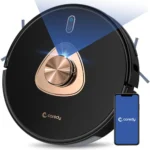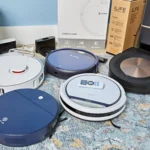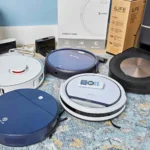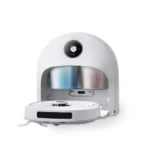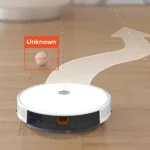Introduction
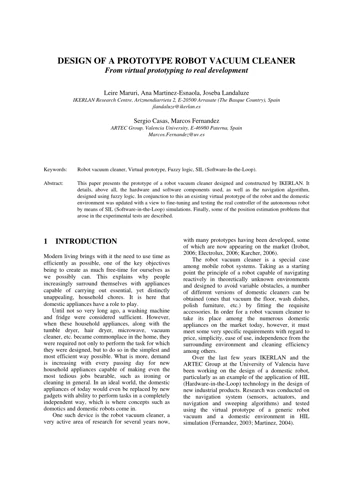
When it comes to keeping our homes clean, we all want the best possible solution. For many, a smart vacuum cleaner is the answer. What sets these devices apart from traditional vacuum cleaners is their ability to navigate around the home and clean efficiently without any human assistance. At the core of this advanced technology is virtual mapping and navigation, which allows the vacuum cleaner to map out the room and navigate around it with ease. In this article, we will delve into the inner workings of virtual mapping and navigation and explore the benefits it offers over traditional vacuum cleaners. We will also provide some examples of smart vacuum cleaners that utilize this advanced technology and give you some pointers to help you choose the right one for your needs. So sit back and get ready to learn about the exciting world of virtual mapping and navigation in smart vacuum cleaners!
What is a Smart Vacuum Cleaner?
A smart vacuum cleaner is a high-tech device designed to clean floors without human intervention. It uses advanced technology such as sensors and mapping algorithms to create a virtual map of the room and navigate around obstacles. With virtual mapping and navigation, smart vacuums achieve efficient cleaning with minimal user input.
Smart vacuums come with a range of features that enhance cleaning efficiency. These may include advanced suction technology, voice control, automatic charging, and scheduling options. Many models can be controlled using a smartphone app, allowing the user to start and stop cleaning cycles remotely.
One of the main advantages of smart vacuums is their virtual mapping and navigation capabilities. By creating a map of the room, the vacuum can avoid obstacles and navigate efficiently around furniture and other objects. This not only results in more thorough cleaning, but also helps to prevent collisions and damage to the vacuum.
There are many benefits of virtual mapping and navigation in smart vacuums, such as efficient cleaning, no-go zones, and smart navigation. Some of the top smart vacuum cleaners with mapping and navigation capabilities include the iRobot Roomba, Ecovacs Deebot, and Shark Ion Robot.
Choosing the right smart vacuum cleaner with virtual mapping and navigation depends on various factors such as cost, features, and room size and layout. To learn more about virtual mapping and how it enhances smart vacuums, check out this article. For a list of top smart vacuum cleaners with mapping and navigation, visit this page.
What is Virtual Mapping and Navigation?
Virtual Mapping and Navigation is a process by which a smart vacuum cleaner can navigate and map out a room or area in order to clean it efficiently. Unlike traditional vacuum cleaners, smart vacuum cleaners are equipped with advanced sensors and mapping algorithms that allow them to move intelligently and avoid obstacles.
The virtual mapping and navigation system is made up of a number of different components that work together to create a complete map of the room. These components include sensors and cameras, mapping algorithms, and vacuuming algorithms.
In addition to creating a map of the room, the virtual mapping and navigation system also allows the smart vacuum cleaner to navigate and clean the room in a more efficient manner. This is because the vacuum can identify the most efficient cleaning path and avoid areas that have already been cleaned.
The virtual mapping and navigation system is a key feature of smart vacuum cleaners that sets them apart from traditional vacuum cleaners. By using this advanced technology, smart vacuum cleaners are able to navigate and clean homes more efficiently and effectively.
| Components of Virtual Mapping and Navigation System | Description |
|---|---|
| Sensors and Cameras | These sensors and cameras detect objects and obstacles in the room and send the data to the mapping and vacuuming algorithms. |
| Mapping Algorithms | These algorithms analyze the data from the sensors and cameras to create a map of the room. The map is then used to determine the vacuum’s cleaning path. |
| Vacuuming Algorithms | These algorithms use the map of the room to help the vacuum identify the most efficient cleaning path. The vacuum is also able to avoid areas that have already been cleaned. |
To learn more about how virtual mapping enhances smart vacuums, check out our article on virtual mapping and its benefits. You can also read about how virtual mapping impacts the smart home industry in our article on smart home vacuum mapping.
How Does Virtual Mapping and Navigation Work?
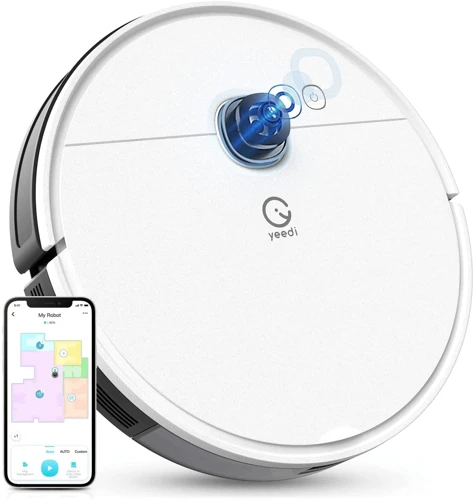
Have you ever wondered how a smart vacuum cleaner navigates its way around your home without any human intervention? The answer lies in virtual mapping and navigation, which is the technology that powers the cleaning capabilities of these devices. By using a combination of sensors, cameras, and advanced mapping algorithms, smart vacuum cleaners can create an accurate map of your home and efficiently clean it up without missing any spots. Let’s take a closer look at how virtual mapping and navigation works in smart vacuum cleaners.
Sensors and Cameras
The Importance of Sensors and Cameras in Virtual Mapping and Navigation
Virtual mapping and navigation in smart vacuum cleaners rely heavily on the sensors and cameras. These features allow the vacuum to “see” and “understand” the layout of the room. Here are some of the most commonly used types of sensors and cameras:
- Laser sensors: these sensors are also known as “laser distance sensors” and use lasers to measure the distance between objects. They are able to create a detailed 3D map of the room, which is then used for navigation.
- Optical sensors: these sensors use visible light to determine the distance between the vacuum and objects. They are typically used in combination with other sensors to provide more accurate mapping.
- Camera sensors: these sensors are essentially small cameras installed in the vacuum cleaner. They capture images of the room and provide a visual map for navigation purposes. Some smart vacuum cleaners even use specialized cameras that are able to detect and avoid obstacles in real-time.
How Do These Sensors and Cameras Work Together?
When combined, these sensors and cameras allow the smart vacuum cleaner to create a detailed layout of the room. Laser sensors provide accurate 3D information, which is then combined with the data from the optical sensors and cameras. This information is then used to create a visual map of the room.
The vacuum cleaner then uses this map to navigate around the room, using the sensors to detect and avoid obstacles in real-time. As the vacuum moves around, the sensors and cameras feed new information back to the mapping algorithms, allowing the vacuum to update its map and adjust its cleaning patterns as needed.
The Benefits of Sensors and Cameras in Virtual Mapping and Navigation
Thanks to these sensors and cameras, smart vacuum cleaners with virtual mapping and navigation are able to provide a number of benefits, including:
- More efficient cleaning: with the ability to create accurate maps of the room, smart vacuum cleaners are able to clean more efficiently and effectively than traditional vacuum cleaners.
- More precise navigation: by using sensors and cameras to detect obstacles and plan cleaning routes, smart vacuum cleaners are able to navigate more precisely and avoid getting stuck or lost.
- Greater ease of use: with the ability to create maps and navigate autonomously, smart vacuum cleaners require less user intervention and are more convenient to use.
Sensors and cameras play a critical role in the virtual mapping and navigation capabilities of smart vacuum cleaners. They allow these devices to create detailed layouts of the room, navigate precisely and efficiently, and provide a more seamless cleaning experience for users.
Mapping Algorithms
Mapping algorithms are a fundamental component of virtual mapping and navigation in smart vacuum cleaners. These algorithms allow the vacuum cleaner to create a digital map of the space it is cleaning, enabling it to navigate and clean the area more efficiently.
Point-to-Point Mapping: Some smart vacuum cleaners use a point-to-point mapping algorithm. This algorithm creates a map of the room by sending a signal to surrounding objects and mapping the distance and location of those objects. Once the vacuum cleaner has taken measurements from several points, it can create a digital floor plan of the space.
SLAM Mapping: Other smart vacuums use a Simultaneous Localization and Mapping (SLAM) algorithm. This algorithm is more complex and creates a map by combining data from various sensors and cameras. The vacuum cleaner uses a combination of machine learning and real-time data to create a map of the room. As it navigates through the space, the vacuum cleaner is constantly updating its digital map with new information, ensuring that it always has the most accurate floor plan possible.
Obstacle Detection: Mapping algorithms also enable smart vacuum cleaners to detect obstacles in their path. With the help of sensors and cameras, the vacuum cleaner can identify and avoid obstacles such as furniture and toys. It can also detect when it is approaching a cliff, such as a staircase, and avoid falling.
Re-Mapping and Localization: Mapping algorithms also allow smart vacuum cleaners to re-map and localize themselves within a space. If the vacuum cleaner is interrupted during cleaning, it can use its digital map to pick up where it left off once it resumes cleaning. The algorithm also enables the vacuum cleaner to locate itself within the space and navigate back to its charging station when it needs to be recharged.
Mapping algorithms are a critical component of virtual mapping and navigation in smart vacuum cleaners. They allow the vacuum cleaner to create a digital floor plan of the space, detect obstacles and cliffs, re-map and localize itself, and ultimately clean more efficiently.
Vacuuming Algorithms
Once the smart vacuum cleaner has collected all the necessary data about the room through its sensors and cameras, it’s time to begin the actual vacuuming process. The vacuuming algorithms are what allow the device to clean the room in the most efficient way possible.
1) Path Planning:
The vacuuming algorithm uses the data it has collected to determine the best path to take through the room. This path will typically be the most efficient route that covers the entire floor space while avoiding obstacles and staying within any no-go zones that have been set.
2) Obstacle Avoidance:
As the smart vacuum cleaner moves through the room, it must be able to detect and avoid obstacles. Vacuuming algorithms ensure that the device can navigate around any obstacles in its path without bumping into walls, furniture, or other objects.
3) Cleaning Pattern:
To ensure that every part of the room is covered, the vacuuming algorithm directs the device to follow a specific cleaning pattern. This pattern may be a systematic back-and-forth motion or a more randomized path depending on the model of the vacuum.
4) Battery Management:
Another important aspect of vacuuming algorithms is battery management. The algorithm ensures that the vacuum cleaner can clean the entire room using the available battery power. The device will return to its docking station when it’s running low on battery and recharge on its own before continuing the cleaning process.
5) Dustbin Management:
Finally, the vacuuming algorithm also manages the dustbin, ensuring that the device empties it when necessary throughout the cleaning process. This means that the vacuum cleaner can continue to operate without being bogged down by too much debris in the dustbin.
Vacuuming algorithms are essential for the optimal performance of a smart vacuum cleaner. They allow the device to navigate efficiently and effectively throughout the room while avoiding obstacles and optimizing cleaning patterns. By using these algorithms, homeowners can ensure that their floors are cleaned thoroughly by their smart vacuum cleaner.
The Benefits of Virtual Mapping and Navigation
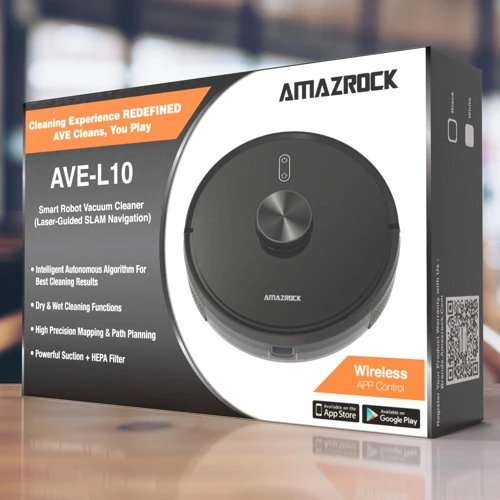
As our lives become increasingly busy and hectic, many of us struggle to keep up with household chores. This is where smart vacuum cleaners equipped with virtual mapping and navigation technology come in – they offer several benefits that traditional vacuum cleaners do not. By utilizing sensors, algorithms, and smart navigation, these devices are capable of cleaning more efficiently and effectively than ever before. In this section, we’ll dive into some of the key benefits of virtual mapping and navigation in smart vacuum cleaners.
Efficient Cleaning
Virtual mapping and navigation offer efficient cleaning capabilities that traditional vacuum cleaners simply can’t match. Here are some of the ways that virtual mapping and navigation helps increase cleaning efficiency:
- Targeted cleaning: Instead of aimlessly wandering around a room, smart vacuum cleaners with virtual mapping and navigation create a map of the room to identify areas that require more attention. This allows the vacuum cleaner to spend more time cleaning areas that need it most, resulting in more thorough cleaning in less time.
- Optimized cleaning paths: Virtual mapping and navigation allows smart vacuum cleaners to create optimized cleaning paths that avoid unnecessary cleaning, minimizing duplicate cleaning and reducing cleaning time. The vacuum can even create a cleaning schedule based on the map it creates to ensure a consistently clean space.
- Better debris collection: The mapping feature allows the vacuum cleaner to identify objects and furniture in the room, avoiding collisions and getting into hard-to-reach areas without knocking anything over. This results in better overall debris collection with less effort.
- No-Go Zones: With virtual mapping and navigation, homeowners can designate specific No-Go Zones, where the vacuum cleaner will not go. This means you can keep the vacuum cleaner from cleaning areas where you have delicate belongings or where it may get stuck.
- Real-time monitoring: Smart vacuum cleaners with virtual mapping and navigation can be controlled through an app on your phone, allowing for real-time monitoring of the cleaning process. This means you’re always in control of your cleaning schedule and can adjust settings as needed.
Virtual mapping and navigation helps smart vacuum cleaners clean more efficiently, reducing cleaning time while delivering a more thorough clean.
No-Go Zones
One of the benefits of virtual mapping and navigation in smart vacuum cleaners is the ability to set up No-Go Zones. These are areas in your home where you don’t want the vacuum cleaner to go. For example, you may not want it to enter a room that is currently being used, or you may have delicate furniture that you don’t want to risk the vacuum cleaner bumping into.
Setting up No-Go Zones is easy with most smart vacuum cleaners that have virtual mapping and navigation capabilities. You simply use the accompanying mobile app to create a virtual line or boundary on the map, indicating where you don’t want the vacuum cleaner to go. The vacuum cleaner will then use its sensors and algorithms to stay within the predetermined cleaning area.
Take a look at the table below for some examples of No-Go Zone features in popular smart vacuum cleaners:
| Smart Vacuum Cleaner | No-Go Zone Features |
|---|---|
| iRobot Roomba i7+ | Ability to set up virtual boundaries and rooms, as well as temporary cleaning zones. |
| Xiaomi Mi Robot Vacuum | Virtual barriers can be set up to block certain areas. |
| Ecovacs Deebot N79S | Virtual boundary strips can be used to keep the vacuum cleaner out of certain areas. |
| Shark IQ Robot Vacuum | Ability to set up virtual No-Go Zones and barriers. |
With No-Go Zones, you can have peace of mind knowing that your smart vacuum cleaner won’t enter certain areas of your home or disturb delicate items. This feature also adds to the convenience of using a smart vacuum cleaner as you don’t have to worry about moving things around or blocking off areas manually.
Smart Navigation
When it comes to smart vacuum cleaners with virtual mapping and navigation, one of the standout features is their ability to offer smart navigation. This means that the vacuum cleaner can identify its surroundings and select the most efficient cleaning path possible. Here are some of the key elements of this process:
- Real-time mapping: As the vacuum cleaner moves through a space, it constantly updates its map of the area in real-time. This ensures that it always knows where it is and can accurately navigate through the environment.
- Laser-guided sensors: In many cases, smart vacuum cleaners use laser-guided sensors to accurately detect and avoid obstacles in their path. These sensors are often much more accurate and reliable than traditional sensors, allowing the vacuum cleaner to navigate tricky spaces with ease.
- Multiple floor plans: Some smart vacuum cleaners can store multiple floor plans in their memory, allowing them to quickly switch between different cleaning routes for different areas of the home.
- Customizable cleaning: In addition to the automated cleaning routes created by the vacuum cleaner, many models allow users to customize the cleaning path based on their specific needs. For example, they may be able to mark certain areas as off-limits or set the vacuum cleaner to focus on a specific section of the room.
- Adaptive movement: Lastly, smart vacuum cleaners with virtual mapping and navigation often use advanced algorithms to adapt their movement based on the layout of the room. They may alter their speed or direction in response to changes in the environment, ensuring optimal cleaning performance at all times.
With all of these features working together, a smart vacuum cleaner with virtual mapping and navigation can provide efficient and effective cleaning like never before. The combination of real-time mapping, laser-guided sensors, and customizable cleaning paths means that these devices can navigate through complex spaces with ease, ensuring that every inch of the floor is thoroughly cleaned.
Examples of Smart Vacuum Cleaners with Virtual Mapping and Navigation
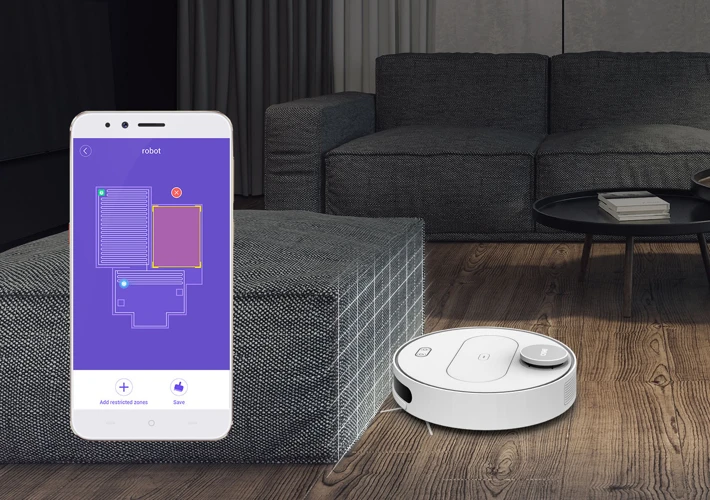
Smart vacuum cleaners with virtual mapping and navigation technology have become increasingly popular in recent years. Here are a few examples of the top smart vacuums on the market that utilize this cutting-edge technology:
1. iRobot Roomba s9+
The iRobot Roomba s9+ is considered one of the most advanced robot vacuums with virtual mapping and navigation technology. This vacuum uses an advanced mapping system called vSLAM that enables it to identify objects and map out your entire home so that it can navigate through each room with ease. It also has a unique D-shaped design that allows it to clean hard-to-reach corners effectively.
2. ECOVACS Deebot Ozmo T8 AIVI
The ECOVACS Deebot Ozmo T8 AIVI is another smart vacuum cleaner that uses advanced virtual mapping and navigation technology. It features laser mapping that scans and maps out your entire home, including furniture placement and room dimensions, to ensure efficient cleaning. The vacuum also features an artificial intelligence system that enables it to recognize and avoid obstacles, making it perfect for homes with pets and children.
3. Roborock S7
The Roborock S7 is a versatile smart vacuum cleaner that uses advanced navigation technology to clean your floors efficiently. It features an improved LiDAR system that creates a virtual map of your home, enabling it to plan and execute its cleaning route with precision. It also has a unique sonic mopping system that scrubs floors at 3,000 times per minute.
4. Shark AI Robot Vacuum RV2001WD
The Shark AI Robot Vacuum uses advanced mapping technology to navigate your home efficiently. It has a LiDAR system that creates a virtual map of your home and uses this map to navigate around objects and create efficient cleaning paths. It also has a unique self-emptying base that allows it to automatically empty its dustbin, making it an excellent choice for those who want to automate cleaning even further.
There are many smart vacuum cleaners on the market today that use virtual mapping and navigation technology to clean homes efficiently. When choosing one, consider the size and layout of your home, as well as the features and cost of each vacuum, to find the perfect fit for your cleaning needs.
Virtual Mapping and Navigation vs. Traditional Navigation
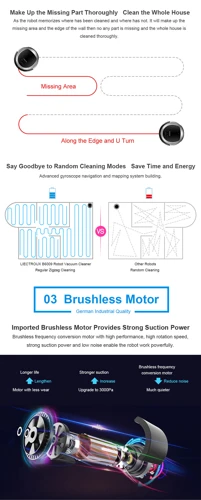
When it comes to vacuum cleaners, traditional navigation technology relies on a “bump and move” strategy. In simple terms, the vacuum cleaner moves in a straight line until it bumps into an object, and then changes direction. The problem with this approach is that it can result in missed spots, as the vacuum cleaner may not cover the entire room evenly.
Virtual Mapping and Navigation (VMN), on the other hand, uses advanced technology to map out the area to be cleaned and create a detailed plan for coverage. This approach results in a more efficient cleaning process, as the vacuum cleaner moves in a systematic pattern that covers each area evenly. Additionally, VMN technology allows the vacuum cleaner to “remember” the layout of the room and adjust its cleaning strategy accordingly.
The benefits of VMN technology become particularly clear when it comes to larger rooms or homes with multiple rooms. Traditional navigation technology can struggle to cover a large area effectively, which may result in some areas not being cleaned at all. By contrast, VMN technology allows a vacuum cleaner to navigate an entire home with ease and without missing spots.
It’s worth noting that VMN technology comes with its own set of challenges. For example, the more intricate mapping algorithms require more resources, which means that VMN vacuum cleaners may be more expensive. Additionally, the sensors and cameras used to create the map can be more sensitive and may require more frequent cleaning.
However, the use of VMN technology represents a significant advancement in the field of smart vacuum cleaners. By incorporating mapping and navigation capabilities, these devices are able to clean more efficiently and more effectively than ever before. Whether you’re looking for a vacuum cleaner for your home or office, considering a model with VMN technology is a smart choice.
Considerations for Choosing a Smart Vacuum Cleaner with Virtual Mapping and Navigation
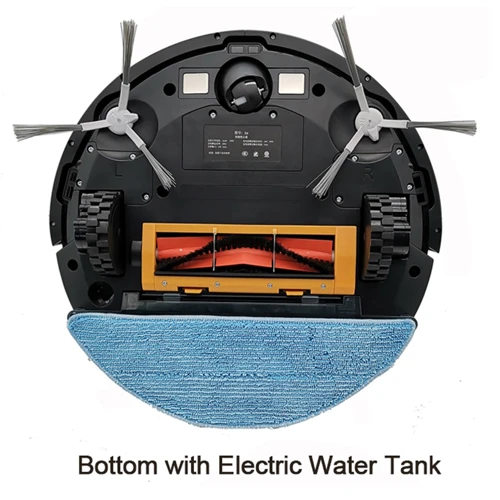
When it comes to choosing the best smart vacuum cleaner that utilizes virtual mapping and navigation, there are a few things you should consider before making a purchase. With so many options available on the market, it can be overwhelming to determine which features are essential for your specific needs. In this section, we will cover some important considerations to keep in mind when choosing a smart vacuum cleaner with virtual mapping and navigation. So, let’s dive in and explore the key factors that will help you make the best decision.
Cost
When considering a smart vacuum cleaner with virtual mapping and navigation, cost is one of the key factors to consider. These types of vacuum cleaners generally come at a higher price point than traditional ones, but they also offer many advanced features that may be worth the investment.
Below is a table of some popular smart vacuum cleaners with virtual mapping and navigation and their corresponding prices as of 2021:
| Brand and Model | Price |
|---|---|
| iRobot Roomba i7+ | $799 |
| Ecovacs Deebot Ozmo T8 | $799 |
| Neato Botvac D7 Connected | $599 |
| Shark IQ Robot Vacuum R101AE | $499 |
As you can see, these smart vacuum cleaners can range from around $500 to $800. It’s important to keep in mind that while these vacuums may come at a higher cost than traditional ones, they offer a range of advanced features that can make your cleaning routine more efficient and hassle-free.
It’s also worth considering the long-term costs of owning a smart vacuum cleaner. For example, some models require specific replacement parts, such as filters or brushes, which may add to the overall cost of ownership. Additionally, some models may require subscription services for certain features, such as the ability to use a mobile app for remote control or scheduling.
Ultimately, when deciding on a smart vacuum cleaner with virtual mapping and navigation, it’s important to weigh the upfront cost against the long-term benefits and convenience it can offer in your cleaning routine.
Features
When considering the features of a smart vacuum cleaner with virtual mapping and navigation, it’s important to think about what you need for your specific cleaning needs. Here are some features to consider and how they can benefit your cleaning routine:
| Feature | Description | Benefit |
|---|---|---|
| Auto-recharge and resume | The vacuum will automatically return to its charging dock when low on battery and resume cleaning where it left off once fully charged. | Ensures that the vacuum is always charged and ready to clean, without any interruption in cleaning sessions. |
| App controls | You can control the vacuum using a smartphone app, giving you the ability to schedule cleanings, create no-go zones, and adjust settings. | Allows you to control the vacuum from anywhere, and easily adjust settings to fit your cleaning needs. |
| Multifloor mapping | The vacuum will create a map of multiple floors in your home and be able to clean each one accordingly. | Eliminates the need for manual intervention, making it an ideal feature for multi-story homes. |
| Zoned cleaning | The vacuum will divide your home into different zones and clean them one at a time. | Allows for a more efficient and customized cleaning experience, focusing on high traffic or more frequently used areas of the home. |
| No-go zones | You can set zones where the vacuum is not allowed to go, such as children’s play areas or areas with delicate items. | Protects areas of the home that need special attention, as well as any items that may be at risk of being damaged during cleaning. |
| Voice control | You can control the vacuum using voice commands through smart home devices such as Amazon Echo or Google Home. | Provides a hands-free cleaning experience and eliminates the need for manual controls. |
These features can enhance the overall cleaning experience and make it more efficient and personalized to your specific needs. When deciding on a smart vacuum cleaner with virtual mapping and navigation, consider which features are most important to you and will best suit your cleaning routine.
Room Size and Layout
When choosing a smart vacuum cleaner with virtual mapping and navigation, the room size and layout are crucial considerations. Different models have different cleaning capacities and may navigate spaces differently based on their features.
To help you choose the right model for your needs, here is a table listing some popular smart vacuum cleaners and their recommended room sizes:
| Model | Recommended Room Size |
|---|---|
| iRobot Roomba s9+ | Up to 2,000 sq ft |
| Ecovacs Deebot N8 Pro | Up to 2,200 sq ft |
| Xiaomi Mi Robot Vacuum-Mop P | Up to 1,500 sq ft |
| Shark IQ Robot Self-Empty XL RV1001AE | Up to 2,500 sq ft |
| Roborock S6 MaxV | Up to 2,000 sq ft |
As you can see, some models are better suited for larger spaces while others are designed for more compact areas.
Additionally, the shape and layout of your room can affect how well a smart vacuum cleaner navigates and cleans. Models with advanced mapping and sensor capabilities will perform better in complex spaces with multiple rooms, obstacles or furniture.
Ultimately, it’s important to consider your unique needs and space when selecting a smart vacuum cleaner with virtual mapping and navigation. While some models may have more advanced features, they may not be necessary if you have a smaller or simpler living space.
FAQs
As technology continues to advance, it’s normal for people to have questions about new and innovative products such as smart vacuum cleaners with virtual mapping and navigation. With this in mind, we’ve put together a list of some of the most frequently asked questions about this exciting technology. So, if you’re looking to learn more about the accuracy of virtual mapping and navigation, or wondering if smart vacuums always get every spot, keep reading! We’ve got answers to all your burning questions.
How accurate is virtual mapping and navigation?
Smart vacuum cleaners with virtual mapping and navigation technology are known for their accuracy in cleaning. The accuracy of the virtual mapping and navigation technology depends on several factors. Here are some key points to consider:
- Sensors and cameras: The accuracy of virtual mapping and navigation technology depends on the quality of sensors and cameras installed in the vacuum. High-quality sensors and cameras can detect the surroundings accurately and create a precise map of the house.
- Mapping algorithms: The virtual mapping and navigation technology rely on advanced mapping algorithms to create a map of the house. These algorithms use information from sensors and cameras to create a detailed and accurate map.
- Vacuuming algorithms: Once the map is created, the vacuuming algorithms take the lead in ensuring accurate cleaning. The vacuuming algorithms use the map to navigate the house and clean every corner and crevice.
- Updates: Virtual mapping and navigation technology may not be accurate if the map is not updated regularly. Vacuum cleaners with advanced virtual mapping and navigation technology come with features like automatic updates to ensure optimal performance
Virtual mapping and navigation technology is highly accurate in cleaning. Smart vacuum cleaners can navigate through furniture, detect no-go zones, and clean every corner of your home. However, it’s important to note that no technology is perfect, and occasional maintenance and upgrades might be required to ensure the vacuum cleaner is always accurate.
Do smart vacuum cleaners miss spots?
It is natural to wonder if smart vacuum cleaners with virtual mapping and navigation technology may miss some spots during the cleaning process. The truth is, even with advanced technology, it is possible for smart vacuum cleaners to miss some areas in your home. However, this can be minimized with proper usage and maintenance.
Here are some reasons why smart vacuum cleaners may miss spots and how you can mitigate these issues:
- Obstacles: Smart vacuum cleaners rely on sensors and cameras to detect obstacles and navigate around them. If there are many obstacles in the cleaning area, such as furniture, toys, or other miscellaneous items, the device may miss some spots. To solve this issue, clear out the cleaning area from any obstructions and make sure to keep it tidy and organized.
- Low Battery: Smart vacuum cleaners require a sufficient amount of battery charge to perform their job effectively. If the battery is low, the device may not be able to cover the entire cleaning area, leaving some spots uncleaned. To avoid this problem, make sure to charge the device before beginning a cleaning session, or set it to automatically re-dock and recharge.
- Programming Errors: If the device’s virtual mapping and navigation algorithms are not correctly programmed, it may miss some spots. This can be fixed by updating the device’s software or consulting with the manufacturer.
- Dirty Sensors: Over time, the sensors and cameras on the device may become dirty, impairing their function and causing the device to miss some spots. To prevent this, regularly clean the sensors and cameras and replace them when necessary.
While it is possible for smart vacuum cleaners with virtual mapping and navigation technology to miss spots, this can be minimized by ensuring a clean and obstacle-free cleaning area, maintaining proper battery charge, programming the device correctly, and keeping the sensors and cameras clean.
Can you schedule virtual mapping and navigation cleaning?
Schedule Your Vacuum Cleaning to Your Convenient Time with Virtual Mapping and Navigation
One of the benefits of virtual mapping and navigation in smart vacuum cleaners is the ability to schedule cleaning at your convenience. With this feature, you don’t have to worry about interrupting your activities or navigating around your robotic vacuum cleaner. You can leave the cleaner to do its job and return to a clean house later.
Virtual mapping and navigation cleaning schedules vary from one brand and model to another. Some models allow daily scheduling while others can run on specific days of the week or as frequently as possible. Some will also allow you to schedule different cleaning modes depending on how dirty or dusty a particular room is, and the time it should take to clean.
Here is a table showing the scheduling options of popular smart vacuum cleaners with virtual mapping and navigation:
| Brand | Scheduling Options |
|---|---|
| iRobot Roomba i7 | Daily scheduling, specific days of the week, and custom cleaning preferences. |
| Xiaomi Roborock S6 | Daily scheduling, specific days of the week. |
| Neato Botvac D7 | Daily scheduling, specific days of the week, and custom cleaning preferences. |
| Eufy RoboVac L70 Hybrid | Daily scheduling, specific days of the week, and custom cleaning preferences. |
With scheduled virtual mapping and navigation cleaning, you can just set and forget, and the smart vacuum cleaner will do the rest. It’s convenient, efficient, and helps maintain a clean home while saving you time and effort.
Conclusion
In conclusion, smart vacuum cleaners with virtual mapping and navigation technology have revolutionized the cleaning industry. They offer an efficient and intelligent approach to house cleaning, freeing up more time for homeowners to focus on other activities.
Virtual mapping and navigation technology uses sensors and algorithms to create maps of homes and navigate around obstacles for thorough cleaning. This technology offers a number of benefits such as efficient cleaning, no-go zones, and smart navigation, which make cleaning more convenient and hassle-free.
However, when choosing a smart vacuum cleaner with virtual mapping and navigation, cost, features, and room size and layout must be considered. It is important to ensure that the device suits the specific cleaning needs and budget.
Smart vacuum cleaners with virtual mapping and navigation technology also outperform traditional navigation methods. They have a higher level of accuracy and cover the entire room without any missed spots. Furthermore, they can be programmed to clean on a schedule, making cleaning even more effortless.
In a nutshell, virtual mapping and navigation technology empowers smart vacuum cleaners to take the cleaning experience to a whole new level. They simplify the cleaning process and allow homeowners to relax, confident that their homes will always be spotless. With the many benefits brought by this technological innovation, there is no doubt that smart vacuum cleaners with virtual mapping and navigation will continue to gain popularity in the years to come.
Frequently Asked Questions
How does virtual mapping and navigation improve the cleaning process?
Virtual mapping and navigation allow the smart vacuum cleaner to create an accurate floor plan of your home or office. With this virtual map, the smart vacuum cleaner can efficiently navigate and clean the space, leaving no spots untouched.
How does a smart vacuum cleaner create a virtual map of your home?
A smart vacuum cleaner uses sensors and cameras to scan the area as it moves around. These sensors and cameras work together to create a digital map of the space, including furniture, obstacles, and all obstacles in the way.
What are the benefits of a virtual map?
A virtual map allows the smart vacuum cleaner to create a custom cleaning path that avoids obstacles, cover the entire space, and clean efficiently. It also allows you to see which areas were cleaned and which were not, giving you more control over the cleaning process.
How accurate is the virtual mapping and navigation system in smart vacuum cleaners?
The accuracy of virtual mapping and navigation systems depends on the quality and number of sensors and cameras used. The more sensors and cameras a smart vacuum cleaner has, the more accurate it will be. Most modern smart vacuum cleaners use advanced mapping technology and are very accurate in creating virtual maps.
Can a smart vacuum cleaner navigate around no-go zones?
Yes, most smart vacuum cleaners with virtual mapping and navigation allow you to set no-go zones. These are areas where the vacuum cleaner should avoid to prevent damage or disturbance.
Can virtual mapping and navigation be scheduled?
Yes, most smart vacuum cleaners with virtual mapping and navigation allow you to schedule cleaning times or set a custom cleaning routine. Once programmed, the vacuum cleaner will follow the schedule and clean your floors automatically.
How do vacuuming algorithms work?
Vacuuming algorithms determine how the smart vacuum cleaner moves across the floor to cover larger areas efficiently. These algorithms adjust the speed and direction of the vacuum cleaner based on the mapping data collected by the sensors and cameras.
What kind of features should I look for in a smart vacuum cleaner with virtual mapping and navigation?
You should look for features such as voice control, mobile app compatibility, battery life, and dustbin capacity. Additionally, make sure the vacuum cleaner can navigate stairs, corners, and tight spaces and has a high-quality mapping and vacuuming algorithm.
Are smart vacuum cleaners with virtual mapping and navigation expensive?
Smart vacuum cleaners with virtual mapping and navigation can range in price from $200 to $1000 or more, depending on the brand, features, and functionality. However, most models offer a balance between price and features and are a worthwhile investment for those who value cleaning efficiency and convenience.
How do I maintain my smart vacuum cleaner with virtual mapping and navigation?
Make sure to empty the dustbin and replace the filters and brushes regularly. Clean the sensors and cameras with a soft cloth to remove any dirt or debris that may interfere with the mapping process. Follow the manufacturer’s instructions for optimal maintenance and longevity of your smart vacuum cleaner.


